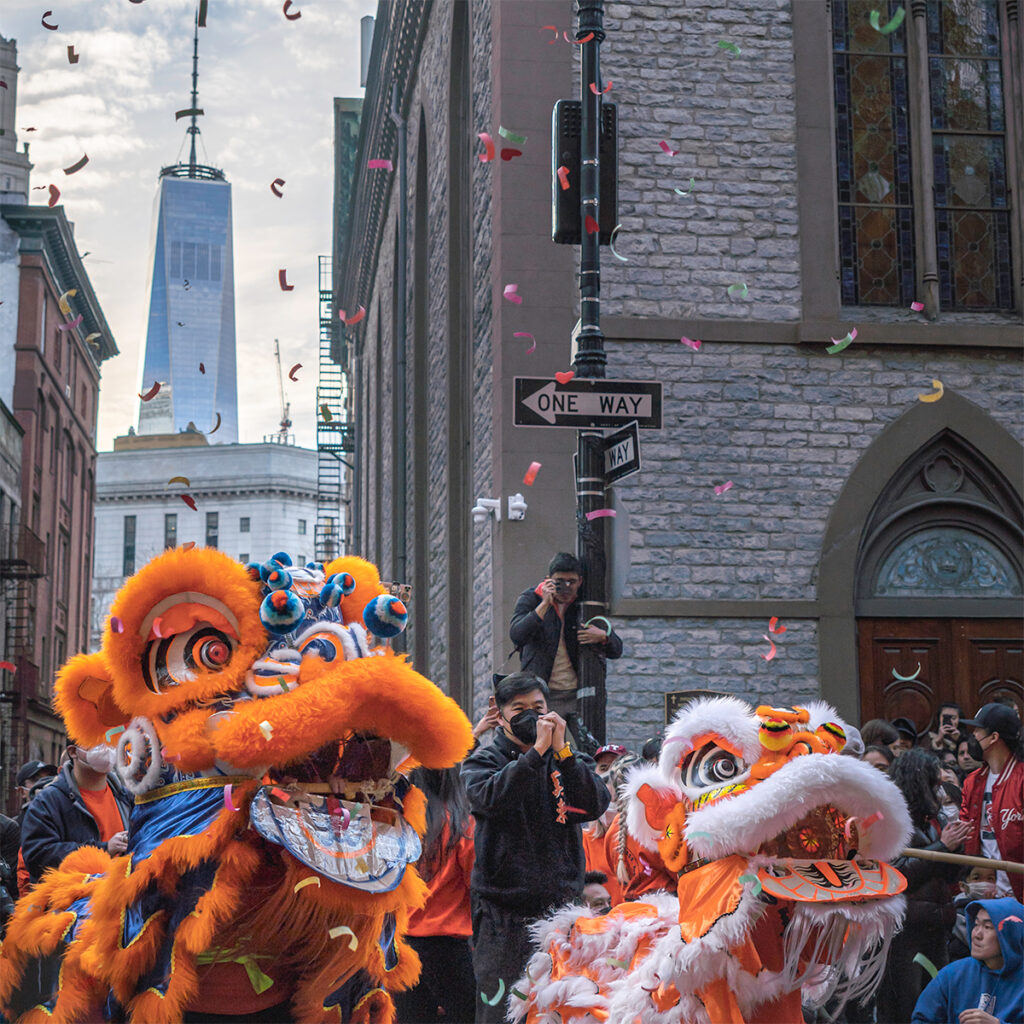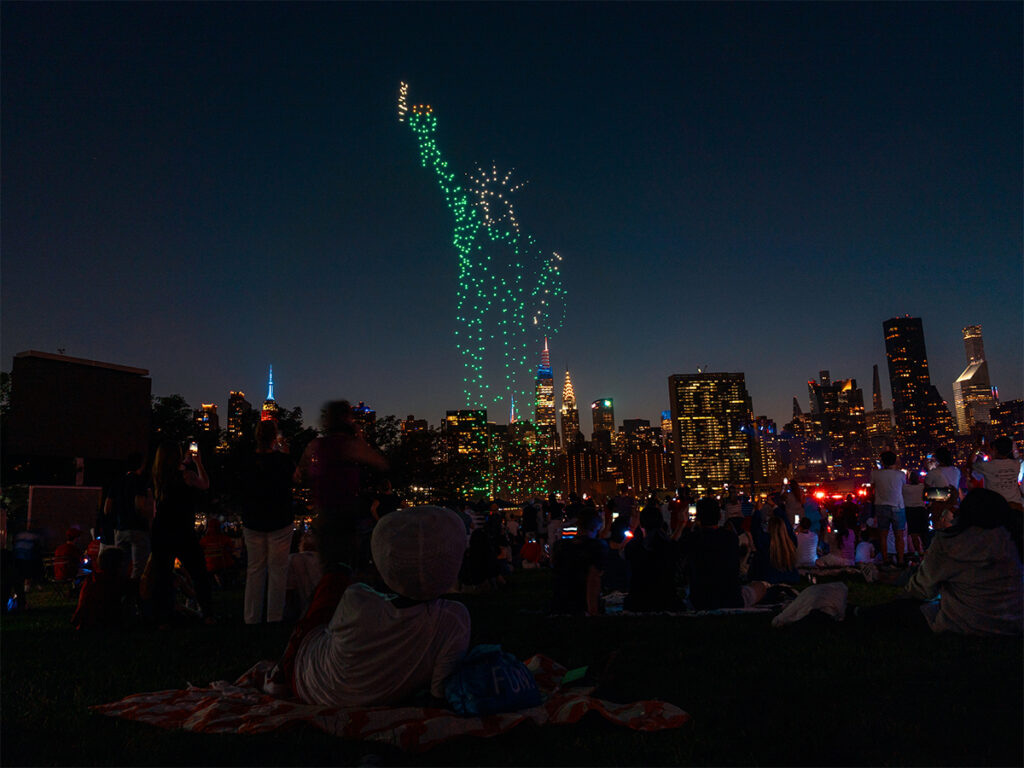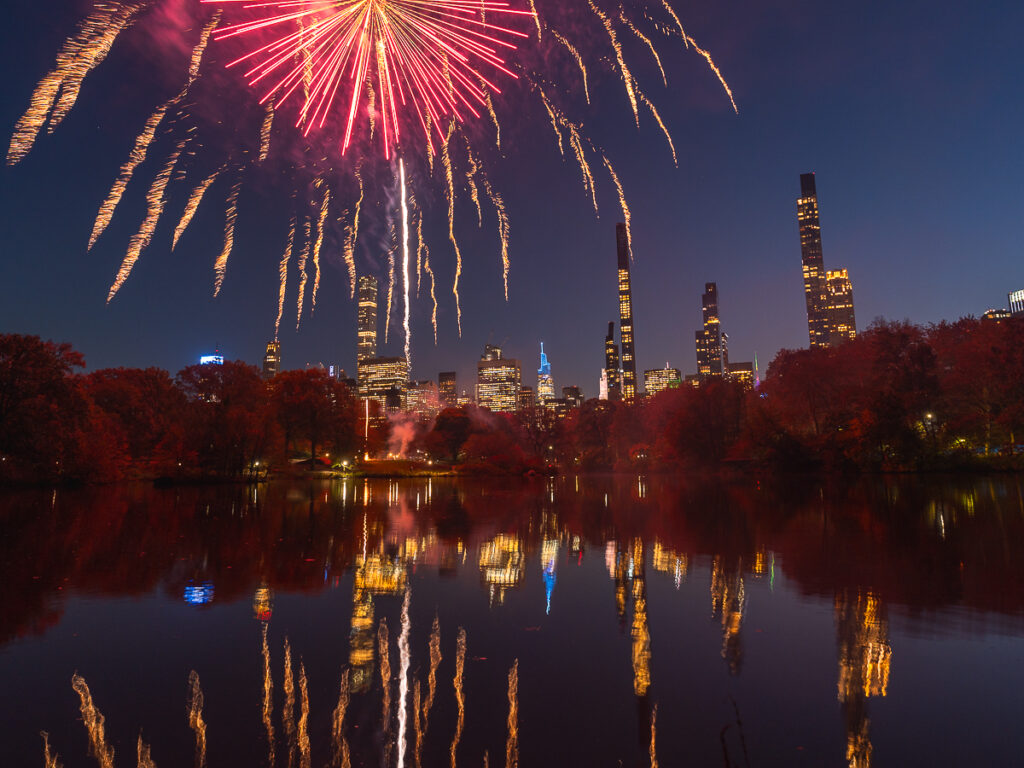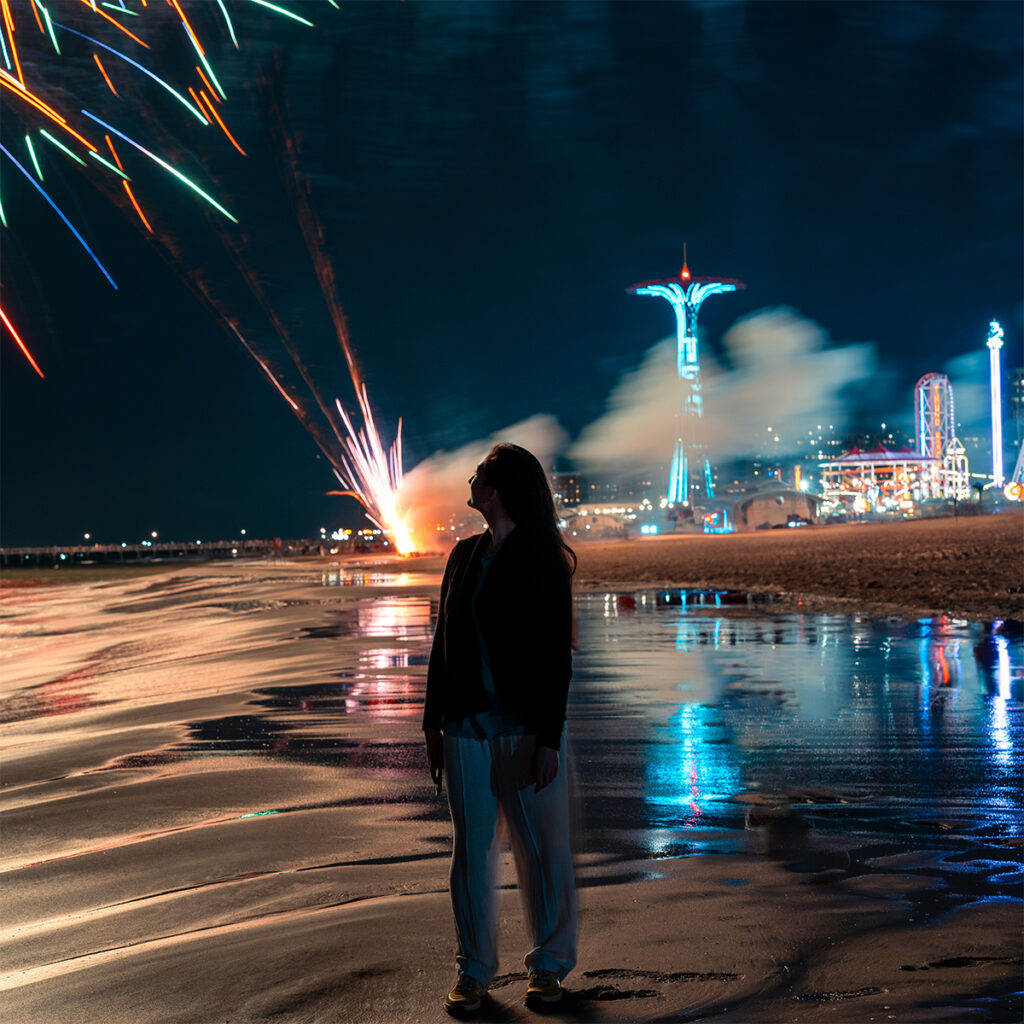Photograph Fireworks in NYC (Best Locations + Camera Settings)
December 29, 2023
Last Updated on June 9, 2025 by Erin Donahue
Wondering how to photograph fireworks with a camera and avoid blurry, disappointing shots? Whether you’re capturing Fourth of July celebrations or New Year’s Eve in NYC, getting it right takes a little prep and the right settings.
I’ve also written about how to take fireworks photos on your phone, but if you’re bringing your camera this time, you’re in the right place. This guide covers the gear, camera settings, and the best NYC fireworks events to practice your long exposure shots.

When and Where Can You Photograph Fireworks in NYC?
Fireworks don’t happen every day, so timing is everything. In New York City, there are several iconic events throughout the year where you can test your skills. Here are the top events officially sanctioned by the city, plus tips on where to shoot from.
New Year’s Eve Fireworks in NYC
Let’s be real: no local wants to be in Times Square on New Year’s Eve. But if you can find a quieter vantage point (like one of the surrounding buildings), it’s still a solid opportunity for fireworks photography.
Lunar New Year/Chinese New Year Fireworks
Pre-COVID, there was a fireworks show on the Hudson River to celebrate Lunar New Year. If it makes a comeback, head to the New Jersey waterfront, which offers the best framing and skyline composition.

Astoria Park Fourth of July Show
This Queens tradition is a local favorite. People arrive by 6 p.m. with food and blankets, and the fireworks begin around 9 p.m. You can shoot from anywhere along the East River’s north edge or even from the Upper East Side of Manhattan.

Macy’s Fourth of July Fireworks: Best Viewing Spots
This is NYC’s biggest fireworks show, launched from multiple barges along the East River. It gets more extravagant every year. Many places in the US have started opting for drones only as a way to be quieter and more environmentally friendly, but NYC insists on flexing and does both. The fireworks are launched from the East River, and Macy’s provides an official viewing map. However, be prepared for insane crowds.
Best photography locations:
- Manhattan: 1st Ave at E. 42nd, E. 34th, or E. 20th Streets
- Queens: Gantry Plaza State Park (best for clear shots across the river)
- Brooklyn: Newtown Barge Park, Transmitter Park, Marsha P. Johnson State Park
Historically, the fireworks in New York City go off between E. 26th and E. 40th Streets, so Gantry Plaza State Park in Long Island City is the best location to watch them.

New York Philharmonic Concert Fireworks
Every summer in June, the New York Philharmonic Concerts are a highly anticipated week-long event, attracting classical music enthusiasts from across the city. The globally renowned orchestra offers a free performance in Central Park, Van Cortlandt Park in the Bronx, Prospect Park in Brooklyn, and Cunningham Park in Queens. Following the concert, fireworks illuminate the skies, usually around 10 pm.
NYC Marathon Opening Ceremony Fireworks
Also in Central Park, and my personal favorite fireworks show. The Marathon’s Opening Ceremony always takes place on the Friday of race weekend. Following the participation of runners from around the globe in the Parade of Nations, the event concludes with a fireworks display from Cherry Hill. Finding a spot in Central Park to capture the fireworks is difficult if you don’t arrive before sundown because barricades are up everywhere.

Coney Island Friday Night Fireworks
Every Friday in the summer, around 9 pm, Coney Island lights up the Brooklyn sky. Bring your tripod and shoot against the beachfront skyline, boardwalk, or even the amusement rides for fun foreground elements.

How Do You Photograph Fireworks with a Camera?
Fireworks are moving light sources, which means your approach needs to be very different from traditional photography. This is where Long exposure photography comes in, otherwise known as slow-shutter or shutter-drag photography. It’s a technique that involves keeping the camera shutter open for a longer period to capture motion blur.
What Camera Gear Do You Need for Fireworks Photography?
To photograph sharp fireworks, you’ll need:
- Tripod: Essential for steady long exposures
- Remote shutter or timer (internal or external): Prevents camera shake
- Manual mode: Gives you full control of settings
- RAW format: Maximizes your editing flexibility
- Manual focus: Reduces focus hunting in low light
- Focus peaking (Sony users): Helps to manually sharpen
Turn off long exposure noise reduction so that it doesn’t take forever for the image to generate in the camera. Every second counts!

What Are the Best Camera Settings for Photographing Fireworks?
These aren’t one-size-fits-all settings, but they’re solid starting points. You’ll still need to adjust based on brightness and ambient light, but it’ll give you a solid foundation. I always say sharing camera settings is kind of useless because the light in your environment will be different than mine. However, these are general starting points, and the rest is experimentation.
- ISO: 100
- Aperture: f/5.6 to f/8 (for sharpness throughout the scene)
- Shutter Speed: Start at 1 second and go longer
- White Balance: Auto (adjust in post)
Fireworks vary in speed and intensity. Some burst fast, some linger. The grand finale is always brighter because of the rapid-fire escalation. Review your shots as you go and adjust exposure time accordingly.
Frequently Asked Questions Photographing Fireworks
Do I need a tripod to photograph fireworks?
Yes. Long exposure requires complete stability. A tripod is the easiest way to avoid camera shake and ensure clean light trails.
Where are the best NYC locations for photographing fireworks?
Gantry Plaza State Park, Central Park, and the Coney Island Boardwalk are some of the best places to photograph fireworks in NYC, thanks to clear views, interesting foregrounds, and skyline backdrops.
What should I avoid when shooting fireworks?
- Don’t rely on autofocus, manually focus in advance
- Don’t keep your shutter open too long, you’ll risk overexposure
Once you understand how to photograph fireworks with your camera, it gets easier. The more you experiment with the exposure triangle, the more creative your shots will become. With a bit of practice, you’ll capture those jaw-dropping light trails and explosions like a pro!
Watch on YouTube
To keep up to date with everything I share, follow along on my social media and read up on what camera gear I use for photography.
Leave a Reply Cancel reply
© Erin Donahue Creative LLC, All Rights Reserved
Terms of Service & Privacy Policy